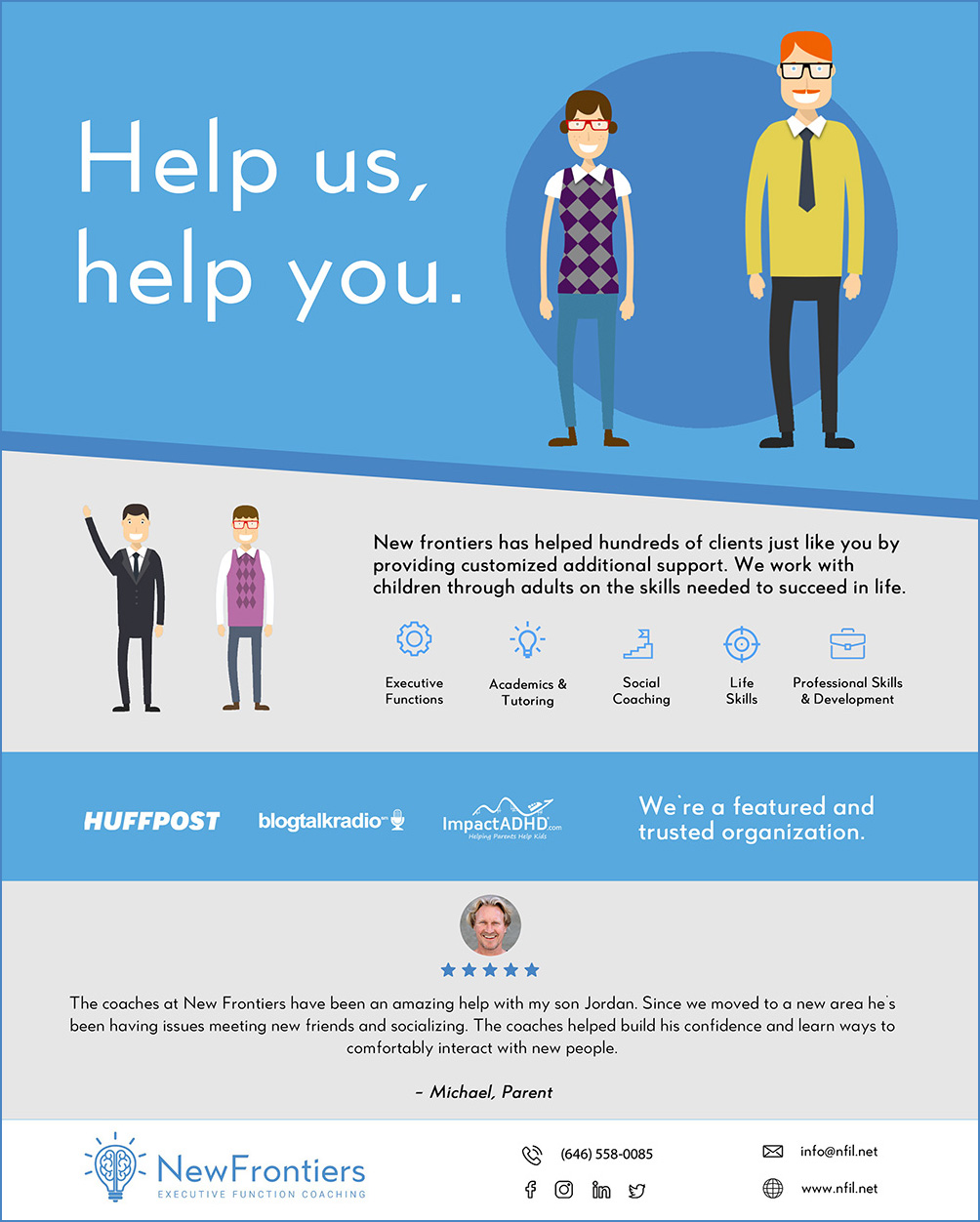We are constantly navigating contexts that we may not have been explicitly guided through. Along the way, there was some experience of making sense of these unexplained rules. Even though no one specifically addressed them, you knew where the line was. This doesn’t always ring true to many individuals on the autism spectrum.

Alissa Cappelleri, MAT
The Hidden Curriculum
The hidden curriculum is considered to be “the unofficial, often unintended or unconscious ‘messages’ in an educational environment” (Varbanova, 2018). These are all of the lessons one learns in school through participating in relationships and engaging in the classroom community. Such set of unsaid information one needs to navigate successfully is not formally coordinated as a conscious effort by teachers as students are being inadvertently taught social norms, values, and overall, the ideologies that enable socialization (Varbanova, 2018). In order for a student to navigate their learning comfortably, they must be aware and operate within the classroom’s rules, routines, and regulations (Jackson, 1968). The rules serve as the expectations of the class community and routines are the processes that must be followed to meet those expectations. Regulations exist as boundaries to be adhered to in order to fully execute routines successfully.
Cultural Capital
In order to fully address ways to engage individuals on the autism spectrum so that they may access the hidden curriculum, cultural capital must be considered. Cultural capital is the knowledge of social norms that allow one to seamlessly participate in a given group, setting, or community (Guillory, 2013). These are the social assets that enable mobility in a stratified society. This concept aids in understanding the values and ideologies presented in the hidden curriculum in terms of knowledge that expected and unexpected behaviors impact the way one navigates the world. To discuss what is explicitly and implicitly taught in the classroom is to identify what cultural and social mores are outlined as expectations along with academic content.
As one moves outside the classroom, the hidden curriculum extends as communities operate within a set of ideals that are not put forthright but are assumed common sense. In this case, subtext becomes the expectation and individuals that struggle to pick up on what is unsaid experience additional difficulty as every environment becomes a new experience. Therefore, taking a closer look at the capital one has access to makes it easier to see where fortification is needed so that sense of self is not impacted due to unsuccessful participation. Using increased metacognitive skills to develop insights and widen viewpoints, individuals on the spectrum are better armed to meet expectations.
The Hidden Curriculum’s Connection to Executive Functions
As those on the autism spectrum often receive supports in social navigation, it is clear where the hidden curriculum and executive function (EF) skills intersect. When encouraging individuals with ASD to engage with unwritten expectations it is essential to focus on what is already known and where one can introduce different means of being. Through making what is abstract real, workarounds are able to be created so that the context one navigates becomes accessible. This explicitly calls upon executive function skills as they are the cognitive processes necessary to read not only the room, but also oneself as they operate within a given context.
Executive functions at a baseline are associated with setting, working towards, and achieving goals. EF skills also make it possible for one to self-regulate and make sense of their community. With social learning coming to the forefront and being viewed with as much importance as academic content, it is necessary to explore methods that enable all learners to solve problems and think critically about their participation in society. The consequence of not knowing the unwritten expectations is a lack of access for those on the spectrum as their explicit identities are constructed with these norms in mind, hence resulting in deficit thinking.
Executive Function Skills in Action
Executive function supports grant students opportunities to engage meaningfully with the world. Through looking at skills students are expected to master but were never taught, one can see where individuals on the autism spectrum can benefit from targeted intervention. Finding opportunities to develop generalizable skills to solve problems and guide behavior enables all to best improve their ability to assess and make decisions. Some executive function skills serve to aid in problem solving to achieve goals, while others guide behavior. In order to successfully read the room, one must be confident in both. With that being said, it is necessary to arm individuals on the autism spectrum to thrive in all contexts.
The goal-achievement skills of planning, metacognition, and working memory enable one to take a step back and assess the situation with respect to past experiences so that the individual can observe their own process and how others perceive their participation.
Planning and prioritizing requires one to craft a roadmap for forward thinking so one can determine what is required and what is optional in a given setting. This is addressed through the strategic construction of timelines and determining what is worth giving attention to.
- What is needed to be done?
- When does it need to be done by?
- How do I know what is required vs. what is optional?
Metacognition presents the skill of thinking about one’s own thinking so that observations can be made about problem-solving behavior. In asking questions about one’s own process to create an external dialogue that becomes an internal monologue, it is possible to uncover what can be done differently to yield the desired response.
- What am I doing?
- How am I doing?
- What needs to be done differently?
Working memory addresses the storage and retrieval of information and experiences to assess the automaticity of foundational knowledge. With the use of repetition, rehearsal, and review, one can better learn to focus attention and attend to details.
- What I should be attending to?
- What past experiences can I make use of?
- What strategy should I use to incorporate new information?
The behavior guiding skills of flexibility, response inhibition, and emotional control are utilized to revise a course of action in the face of obstacles and self-regulate through instilling a pause to think before moving forward.
Flexibility allows for the widening of mindset by switching between concepts and revising plans. Adaptability is learned here through the consideration of options and adjusting routines to practice perspective taking.
- How do I know if I am stuck?
- What can I do to shift?
- What does adaptability look like?
Response inhibition quells impulses as such skill is linked to the resistance response. Taking a moment to evaluate context is a helpful strategy to strengthen this skill in that one can better weigh options after considering the potential consequences of their actions.
- What behavior is expected of me right now?
- What do I need to be doing?
- How will my behavior impact a situation?
Emotional regulation is the process of recalibrating and resetting when taking stock of what is occurring before responding to the environment. Knowing one’s present level of emotion can help to identify the tools for where they need to shift and become more aware of the contributing factors to feelings.
- What do I need to feel ok?
- What can I exercise control over?
- What is the purpose my emotions serve?
Looking to Peg Dawson and Richard Guare’s approach to executive skills intervention, a coaching model that is built on correspondence training, goal setting and directed persistence yields positive results in addressing the hidden curriculum (Dawson & Guare, 2018). The development of executive function skills is more simply changing behavior so one can best participate in the desired community and contexts. Such interventions enable grit and an increased ability to self-monitor. Overall, targeted executive function skills support can empower individuals to successfully navigate the unwritten expectations of various environments and relationships. With the goal of increasing one’s chance of successful engagement with their community, EF coaching allows for the opportunity to foster generalizable skills so that participation is possible.
Alissa Cappelleri, MAT, Program Coordinator, New Frontiers Executive Function Coaching, can be reached at info@nfil.net or (646) 558-0085.
References
Dawson, P., & Guare, R. (2018). Executive Skills in Children and Adolescents: A Practical Guide to Assessment and Intervention – Third Edition (The Guilford Practical Intervention in the Schools Series).
Guillory, J. (2013). Cultural capital: The problem of literary canon formation. University of Chicago Press.
Lai, C. L. E., Lau, Z., Lui, S. S., Lok, E., Tam, V., Chan, Q., … & Cheung, E. F. (2017). Meta‐analysis of neuropsychological measures of executive functioning in children and adolescents with high‐functioning autism spectrum disorder. Autism Research, 10(5), 911-939.
Sarigöz, O., & Özkartal, Z. (2016). Examination of Preservice Teachers Views Onimplicit Learning in Terms of Some Variables. Journal of International Social Research, 9(44).
Varbanova, S. (2018). Hidden Curriculum or the Power of the Side Effects in School Education. Knowledge International Journal, 26(2), 447-450.
Winner, M. G., & Crooke, P. (2014). Executive functioning and social pragmatic communication skills: Exploring the threads in our social fabric. Perspectives on Language Learning and Education, 21(2), 42-50.






